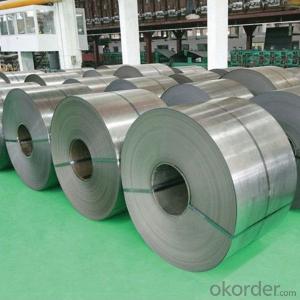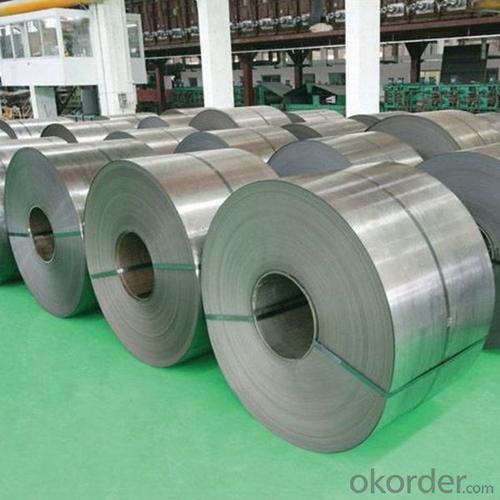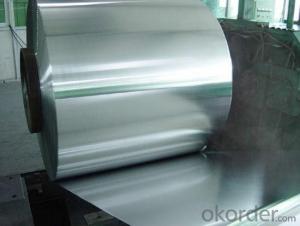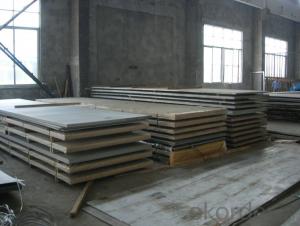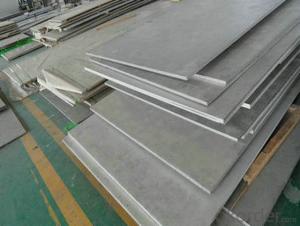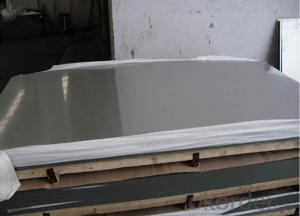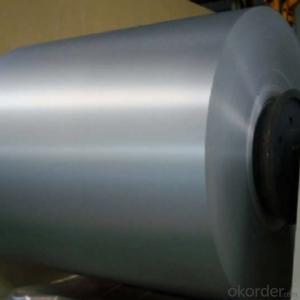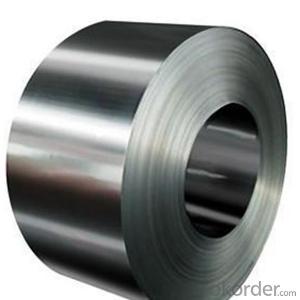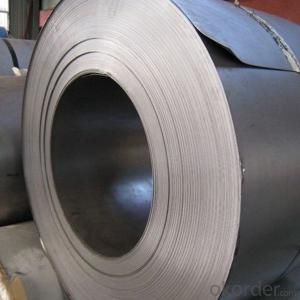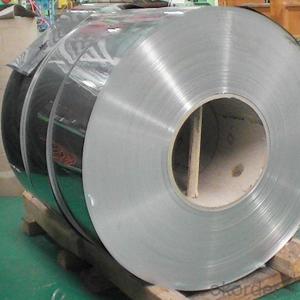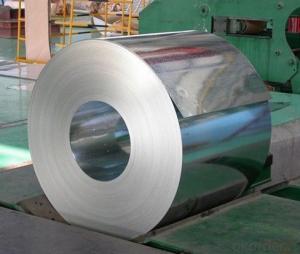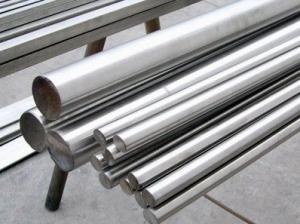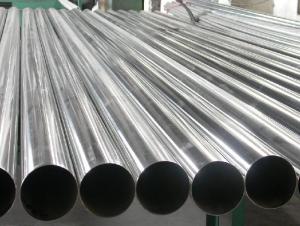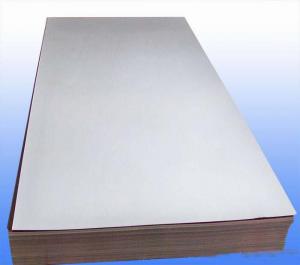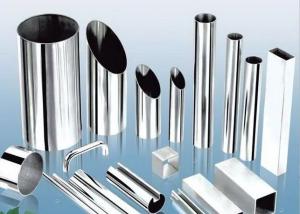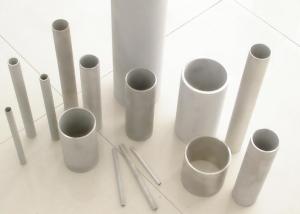Stainless Steel Hot Rolled Steel Coils NO.1 Finish Grade 304 304L
- Loading Port:
- Tianjin
- Payment Terms:
- TT OR LC
- Min Order Qty:
- 20 m.t.
- Supply Capability:
- 20000 m.t./month
OKorder Service Pledge
OKorder Financial Service
You Might Also Like
Specification
Products Description for Stainless Steel Coils/Sheets:
Product | stainless steel coils/plates/sheets | ||
Discharge Port | Any Port, China | ||
Size | Coils | Cold Rolled: | Thickness0.3-8mm,Width:280-2100mm |
Hot Rolled : | Thickness3-14mm,Width:650-2100mm | ||
Plates | Thickness2-80mm,Width:1500-3000mm | ||
Coil Weight | About 20 Tons | ||
Grade | 201,202,304/304L/304H,316/316L/316H,321/H,310S,409/L,430 etc. | ||
Technique | Hot Rolled/Cold Rolled | ||
Finish | 2B, BA, 2D, No1, No2, No4,NO.8,SB etc | ||
Edge | Mill Edge / Slitting Edge | ||
Package | In bundles, or as customer's requirement | ||
Place of Origin | Made in China | ||
MOQ | 20 Tons | ||
Description for Stainless Steel Coils/Sheets:
Prodcut:Stainless Steel Coil
Thinckness: 0.20mm-8.0mm
Width:1000mm, 1219mm(4 feet), 1250mm, 1500mm, 1524mm(5 feet),
1800mm, 2000mm, 2200mm, 2500mm,and customizable
Ni:0.8~1.2% Cu:1.4~1.5% Cr:14
Standard: ASTM, JIS, GB, BS, DIN etc
Grade: 200series&300series&400series
Surface finish: 2B, BA, 8K, 6K, Mirror Finished, No1, No2, No4, Hair Line with PVC
Manufacture technology: cold rolled/hot rolled
Thickness Tolerance: +/-0.1mm
Width Tolerance: +/-10mm
200 Seriers: 201,202
300 Seriers: 301, 304, 304L, 316L, 309, 310S,321
400 Seriers: 410, 410S, 409L,430
Detail picture for Stainless Steel Coils/Sheets
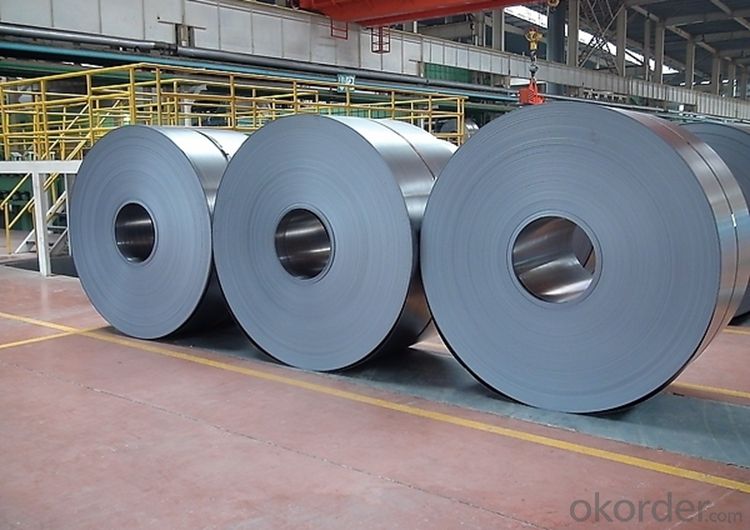
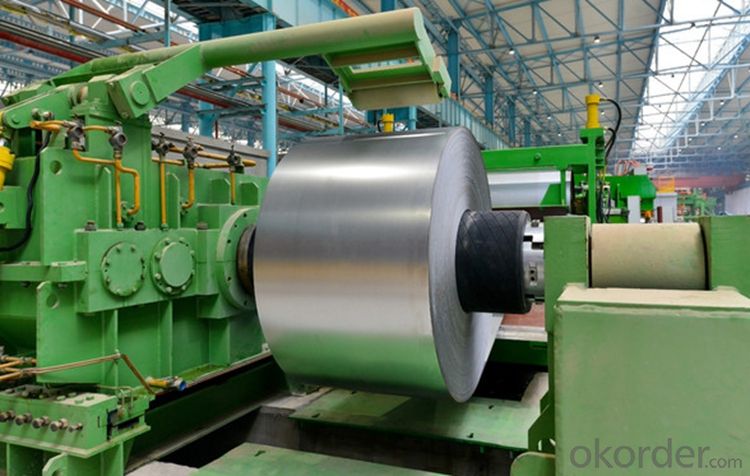
Packaging & Delivery for Stainless Steel Coils/Sheets:
Packaging Detail Standard export packing or following customer's demand
Delivery Time: Within 30-40 days after deposit or according to the order quantity
Export Markets for Stainless Steel Coils/Sheets:
Our target market is the international market. Every year we export most of products to countries like India, Pakistan, South Korea, Brazil, Australia, South Africa, Spain, Sri Lanka, Taiwan, Hong Kong, etc.
FAQ for Stainless Steel Coils/Sheets:
Q:What are the advantages of your company ?
A: We have many professionals, technical personnel, more competitive prices and best after-dales service than other stainless steel companies.
Q:Can you arrange the shipment ?
A: Sure we can help you with the shipment. We have forwarders who have cooperated with us for many years.
- Q: Are stainless steel sheets magnetic?
- Stainless steel sheets have the potential to be magnetic. The magnetic nature of stainless steel sheets relies on their composition. Generally, stainless steel is not magnetic. However, specific grades, such as the 400 series (such as 410, 416, 420, and 430), may possess magnetic properties due to a higher presence of ferritic or martensitic structures. Conversely, the commonly used 300 series stainless steel (such as 304 and 316) is non-magnetic because of its austenitic structure. Thus, it is crucial to consider the specific grade of stainless steel when assessing its magnetic behavior.
- Q: Are stainless steel sheets suitable for outdoor sculptures or decorative pieces?
- Outdoor sculptures or decorative pieces can be made using stainless steel sheets. Stainless steel is a material that is both durable and resistant to corrosion, making it perfect for enduring harsh outdoor conditions. It does not rust, corrode, or stain, meaning it will maintain its attractive appearance over time. Moreover, stainless steel sheets can be easily shaped and welded into different forms, allowing artists to create intricate and detailed sculptures or decorative pieces. Additionally, stainless steel has a sleek and modern look that can enhance the overall beauty of outdoor spaces. In conclusion, stainless steel sheets are an excellent option for outdoor sculptures or decorative pieces because of their durability, resistance to corrosion, and aesthetic appeal.
- Q: How do I prevent galvanic corrosion on stainless steel sheets?
- To prevent galvanic corrosion on stainless steel sheets, there are several measures you can take: 1. Ensure proper alloy selection: Choose a grade of stainless steel that is less prone to galvanic corrosion. Grades such as 316 and 317 are more resistant to corrosion compared to 304 stainless steel. 2. Separate dissimilar metals: Avoid direct contact between stainless steel sheets and other metals, especially those with a higher potential for galvanic corrosion. If contact is necessary, use insulating materials such as gaskets or rubber pads to separate the metals. 3. Use protective coatings: Apply protective coatings or paints specifically designed for stainless steel to create a barrier and prevent galvanic corrosion. These coatings act as a sacrificial layer, shielding the stainless steel from direct contact with the corrosive material. 4. Use isolation materials: Install insulating materials between stainless steel sheets and other dissimilar metals. These can include plastic washers, insulating tape, or non-conductive gaskets to prevent direct electrical contact and subsequent corrosion. 5. Proper maintenance: Regularly clean and inspect stainless steel sheets to remove any contaminants or foreign substances that could promote corrosion. Avoid using abrasive cleaners or tools that could damage the protective layer of the stainless steel. 6. Electrochemical protection: Implement cathodic protection techniques, such as using sacrificial anodes or impressed current systems, to provide an external source of electrons that can counteract galvanic corrosion. These methods help shift the corrosion potential of the stainless steel sheets to a more passive range. By following these preventive measures, you can significantly reduce the risk of galvanic corrosion on stainless steel sheets, ensuring their longevity and maintaining their structural integrity.
- Q: How do you remove fingerprints from stainless steel sheets?
- If you want to remove fingerprints from stainless steel sheets, there are several effective methods to consider: 1. Begin by using warm soapy water and a soft cloth or sponge. Dampen the cloth or sponge and gently rub the affected area in circular motions. Afterward, rinse the cloth or sponge and wipe away any soap residue. Finally, dry the stainless steel sheet using a clean, lint-free cloth. 2. Another option is to create a vinegar solution by mixing equal parts white vinegar and water in a spray bottle. Directly spray the solution onto the fingerprints and allow it to sit for a few minutes. Then, use a soft cloth to wipe the surface in circular motions, ensuring to follow the grain of the stainless steel. Rinse the cloth and remove any remaining vinegar. Thoroughly dry the sheet. 3. You can also try using a small amount of glass cleaner sprayed onto a soft cloth. Gently rub the fingerprints in circular motions, following the grain of the stainless steel. Repeat if necessary, rinsing the cloth and reapplying cleaner as needed. Finally, dry the surface with a clean cloth. 4. If you prefer, there are various commercial stainless steel cleaners available that effectively eliminate fingerprints. Follow the instructions on the product and apply it to the affected areas. Use a soft cloth to wipe the surface, following the grain of the stainless steel, and buff it to achieve a shine. Always read and adhere to any safety precautions mentioned on the product. Remember to test any method on a small, inconspicuous area first to ensure it does not cause damage or discoloration to the stainless steel sheet. Additionally, avoid using abrasive cleaners or scrub brushes as they can scratch the surface. By properly caring for and regularly cleaning your stainless steel sheets, you can maintain a shiny, fingerprint-free appearance.
- Q: What are the common uses of stainless steel sheets?
- Stainless steel sheets possess distinctive properties and versatility, enabling them to be widely utilized in a myriad of applications. Some of the most prevalent uses are as follows: 1. Within the construction industry, stainless steel sheets are extensively employed for roofing, cladding, and facades. The combination of their exceptional durability, resistance to corrosion, and contemporary aesthetic appeal renders them highly desirable. 2. The automotive sector also benefits from the utilization of stainless steel sheets, particularly in the production of components such as exhaust systems, grilles, trims, and decorative elements. Their capacity to withstand heat, corrosion, and impact makes them an ideal choice for these purposes. 3. In the manufacturing of kitchen appliances like refrigerators, ovens, dishwashers, and sinks, stainless steel sheets are commonly employed. Their hygienic properties, stain resistance, and ease of maintenance contribute to their popularity in these applications. 4. The food processing industry extensively relies on stainless steel sheets due to their non-reactive nature and ease of cleaning. They are employed in the fabrication of equipment such as storage tanks, conveyor systems, work surfaces, and food preparation tables. 5. The manufacturing of medical equipment and devices heavily relies on stainless steel sheets. They are instrumental in the production of surgical instruments, dental tools, implantable devices, and hospital furniture owing to their biocompatible nature, corrosion resistance, and ease of sterilization. 6. In the aerospace industry, stainless steel sheets find application in the construction of aircraft components such as fuselage frames, engine parts, and landing gear. Their exceptional strength-to-weight ratio, resistance to extreme temperatures, and corrosion resistance render them suitable for these demanding applications. 7. Within the energy and power generation sectors, stainless steel sheets are commonly employed in power plants, oil refineries, and chemical processing plants for the construction of equipment like heat exchangers, boilers, and storage tanks. Their ability to withstand high temperatures, pressure, and corrosive environments is indispensable in these industries. 8. Stainless steel sheets also serve decorative purposes in architecture and interior design. They can be utilized to create unique and modern finishes on walls, ceilings, furniture, and decorative panels. In conclusion, stainless steel sheets are a versatile material that finds application in various industries due to their exceptional properties, including corrosion resistance, durability, hygienic properties, and aesthetic appeal.
- Q: Can stainless steel sheets be used in medical applications?
- Yes, stainless steel sheets can be used in medical applications. Stainless steel is commonly used in the medical industry due to its excellent corrosion resistance, durability, and ease of cleaning. It is often used for surgical instruments, medical equipment, implants, and other medical devices.
- Q: Can stainless steel sheets be used for magnetic shielding?
- To a certain extent, stainless steel sheets can be utilized for magnetic shielding. Although stainless steel is not intrinsically magnetic, it possesses some magnetic properties due to the presence of iron, a magnetic material, in stainless steel alloys. This enables stainless steel sheets to exhibit weak magnetic characteristics. Nevertheless, the magnetic shielding capabilities of stainless steel sheets are limited when compared to materials specifically engineered for magnetic shielding, such as mu-metal or nickel-iron alloys. These materials have a higher permeability, meaning they can redirect and absorb magnetic fields more efficiently than stainless steel. However, stainless steel sheets can still offer some level of magnetic shielding, particularly in environments with lower intensity magnetic fields. They can assist in reducing the transmission of magnetic fields from one area to another, which can be beneficial in certain applications. Nonetheless, for situations that require high-intensity or sensitive magnetic shielding, it is recommended to utilize specialized magnetic shielding materials for optimal effectiveness.
- Q: How can I classify stainless steel plates?
- Classification according to the use of stainless steel, can be divided into: the bridge plate, boiler plate, shipbuilding plate, armor plate, automotive steel, steel roof, structural steel, electrical steel (steel sheet), special spring steel, solar panels (hoilik steel).
- Q: Can stainless steel sheets be used for elevator handrails or grab bars?
- Yes, stainless steel sheets can be used for elevator handrails or grab bars. Stainless steel is a common material used for these applications due to its durability, corrosion resistance, and aesthetic appeal. It is able to withstand heavy use and provides a secure grip, making it suitable for elevator handrails and grab bars.
- Q: Can stainless steel sheets be used for pressure vessels?
- Yes, stainless steel sheets can be used for pressure vessels. Stainless steel is known for its excellent corrosion resistance, which makes it an ideal material for pressure vessels that are exposed to harsh environments or corrosive substances. It also has high strength and good mechanical properties, allowing it to withstand the internal pressure exerted by the fluid or gas inside the vessel. Additionally, stainless steel sheets can be easily formed and welded to create the desired shape and size of the pressure vessel. Overall, stainless steel sheets are a popular choice for pressure vessels in various industries such as oil and gas, chemical processing, and pharmaceuticals.
Send your message to us
Stainless Steel Hot Rolled Steel Coils NO.1 Finish Grade 304 304L
- Loading Port:
- Tianjin
- Payment Terms:
- TT OR LC
- Min Order Qty:
- 20 m.t.
- Supply Capability:
- 20000 m.t./month
OKorder Service Pledge
OKorder Financial Service
Similar products
Hot products
Hot Searches
Related keywords
